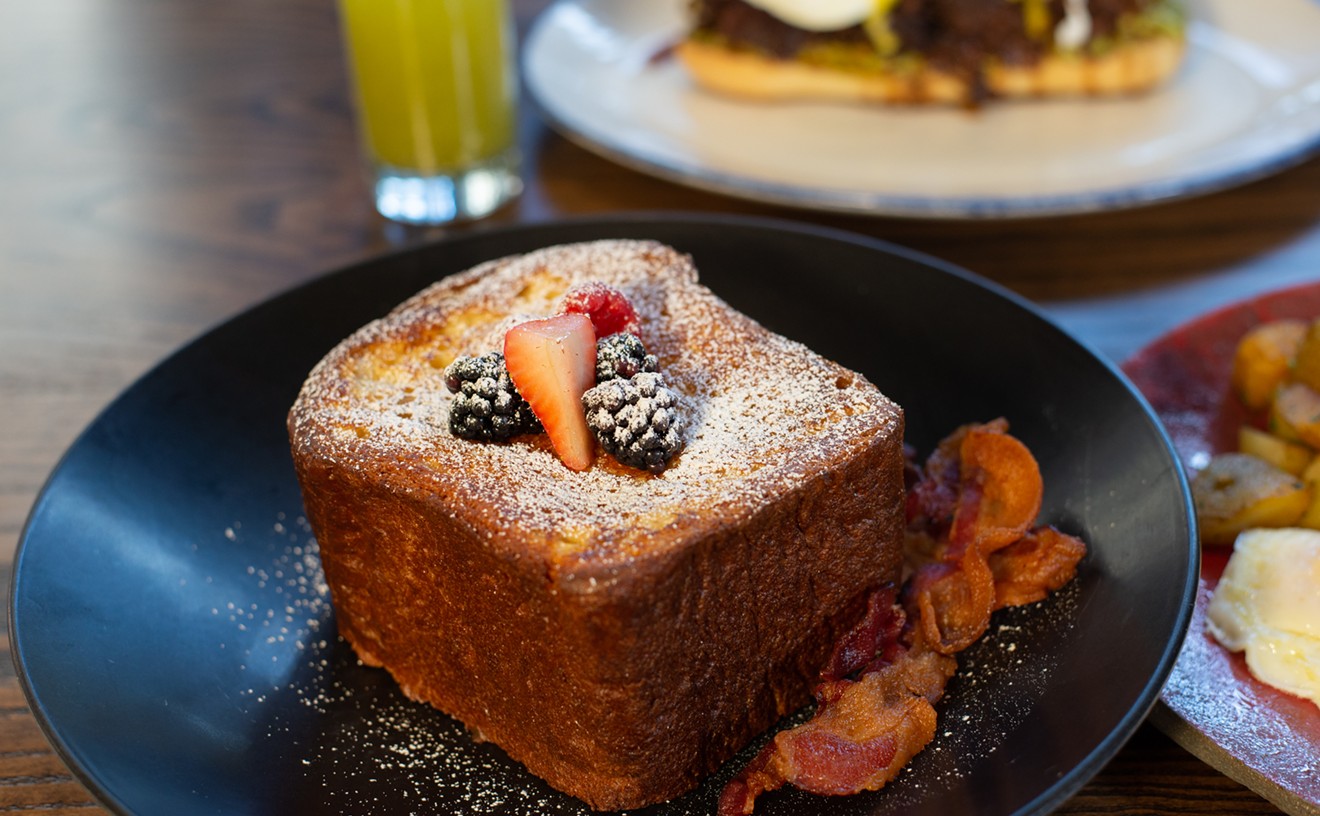Whenever I hear the term "fusion" applied to food, I tend to roll my eyes. It's not that I think that the merging of two ingredients or dishes only stands to dilute whatever was great about each of them in the first place; it's that fusion is everywhere. There isn't a single cuisine or dish served in restaurants or on dining tables at home today that doesn't make use of a little amalgamation of techniques or regional preferences. Fusion is as elemental to cooking as salt and heat.
Fusion is at its best when the chemical reaction is complete, the initial components are almost unrecognizable and something entirely new and distinct is created. The banh mi for instance — the product of French colonization meeting the fragrant and aromatic cooking of Vietnam — is like no other sandwich on the planet, and is arguably one of the best. Fusion is at its worst when restaurants leverage the term to stuff entire quadrants of the globe into a grocery bag so that pad Thai, pho and General Tso's chicken can exist together all on one menu. The resulting dishes are rarely inspiring.
Then there's the type of fusion that attempts to capture a specific place and time when cuisines merge through immigration or along cultural borders. This is what Uno Immanivong and Adrian Verdin set out to capture as chefs/owners of Chino Chinatown in Trinity Groves. The restaurant's website tells of Chinese immigrants who landed in South America, lamented the lack of Sichuan peppercorns and set out to create a hybrid cuisine that would remind them of home. Chino strives to be a destination for this Chinese- and Latin-influenced cuisine.
The plan works almost perfectly with a few appetizers, including the lollipop chicken, which features drumettes treated to some delicate knife work so the meat can be pushed to the end of the bone like a meat-flavored Tootsie Pop. It's a classic from the Indian Chinese playbook, brought to South America with a chile-laced agave dipper puddled on the plate. The elotes makes surprisingly good finger food, too, with charred kernels slathered in bone marrow and sriracha aioli and dusted with cotija. The kitchen slices the cob into short segments that are easy to pick up with modesty, but good luck keeping that sauce off your chin.
There's more, like the edamame and shishito peppers, heaped together and tossed in soy sauce, garlic and chiles, among other things. The mixture is addictive — you'll end up gnawing on your fingertips after every bite, just before you reach in for another.
Unless you grab a golden-fried baton of yucca first. The kitchen dusts the finished fries with duck fat powder, which seems an odd way to go about things when other kitchens are simply frying their fries in duck fat. My waiter told me the kitchen employed the powdered fat because the appetizer came out less heavy and messy that way, but that's just not true. All deep-frying is messy and heavy, and starches fried in animal fat are known for their unparalleled crispness. (They're also more expensive.)
But the yucca is good, dusted in chile powder and sprinkled with cotija, with sriracha ketchup to shuttle the South American root vegetable back to Asia. Enjoy an order or three of any of these, with friends on the patio with a beer, and you'll have a fine evening. Like most of the restaurants at Trinity Groves, Chino Chinatown boasts a sizable front porch, a great place to sit when the weather is balmy and the sun is about to set. Certainly, the scenery is interesting. Out front, a giant four-sided water feature juts up into the sky, belching fire like a temple altar and, because that's not enough, casting color-shifting lights in every direction. When the heat picks up, take comfort in the dining room, with its towering murals, glowing neon and blood-red accents. It's one of the most impressive in Trinity Groves.
And Chino could be one of the most interesting, if the food kept up. Ceviche is covered in a sweet and heavy chile sauce that stains some of the shellfish an odd hue and overwhelms any delicate, briny flavors. Pork buns are filled with stringy pork that taste less like the achiote-stained cochinita pibil mentioned on the menu and more like West Carolina barbecue.
Rib fajitas make use of tattered tortillas and tough, Korean-style galbi, the thinly sliced pork meat you have to pull from cross sections of bone, and then there's the drunken noodles plate on the menu.
The dish is a mainstay of most Thai restaurants in America, and illuminates another type of fusion that sweetens up and dumbs down ethnic dishes so they appeal to mainstream palates. Domestic versions often present soft and gummy noodles, inundated with a thick and sticky sauce, and Chino delivers on all fronts. But couldn't they have lightened things up a touch? A garnish of candied peanuts only adds more sweetness to a dish so heavy you'll need a support team to finish it.
Fusion is everywhere, but it needs to follow some basic rules if it hopes to create a memorable dining experience. The components being fused should end up better than they were on their own, and their amalgamation should have some sort of theme or purpose — the dish or restaurant should tell a story.
There's a sandwich on the menu at Chino that you would eat once a week if the bread that held it together weren't so soft it turned to paste in your mouth. The menu calls it a torta but makes use of lemongrass, pickled carrots and daikon and more of that sriracha aioli. The combination perfectly mimics a banh mi, and adds Vietnam to a growing list of culinary influences for Chino that cover most of Asia. It's like a child who can't resist every color at their disposal when they light up a surface with finger paints. Some of the paints in Immanivong and Verdin's palette are vibrant enough, but there are simply too many of them, and together with loose execution, the results are muddy and indistinctive.










